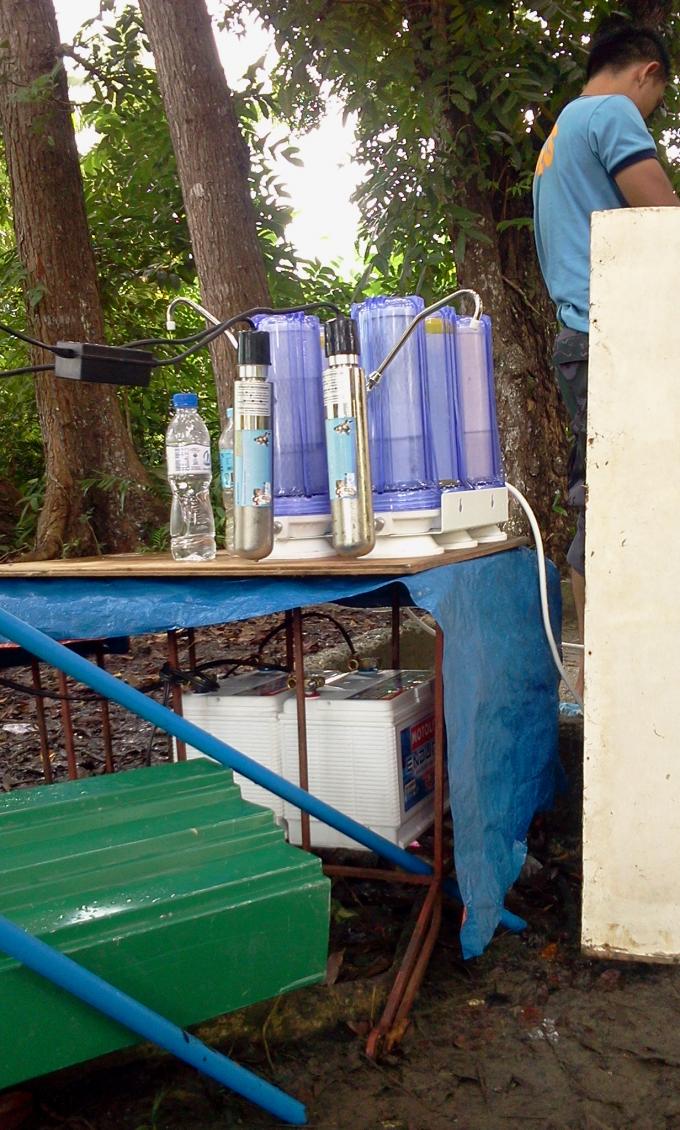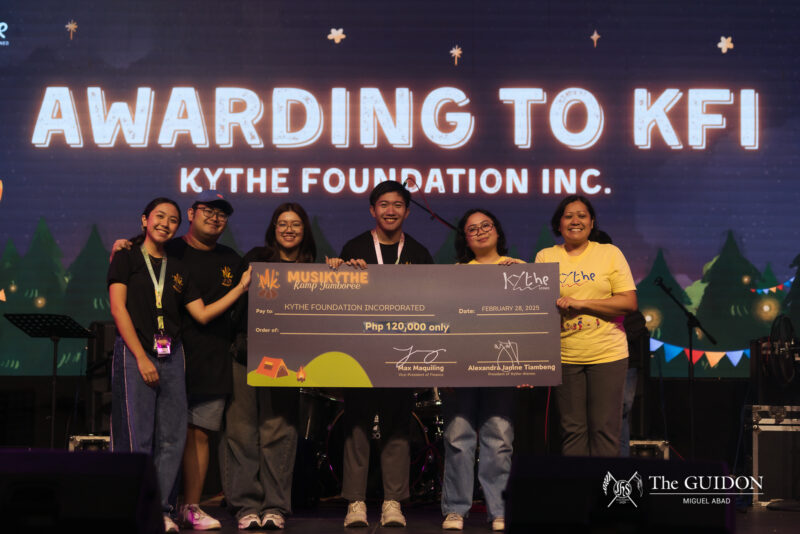
CLEAN WATER. Cabacungan’s brainchild will benefit communities in Bohol that were affected by the recent earthquake.
THE ATENEO Innovation Center (AIC) provided the citizens of Loon, Bohol with clean drinking water earlier this month by developing a solar-powered clean water system.
This is in response to the 7.2 magnitude earthquake that hit Bohol on October 15 and caused the existing water systems to be infected with microbes.
The AIC is a research organization within the Ateneo that provides products and services by commercialization through training, empowering and providing for the next generation of innovators and technopreneurs.
The solar-powered clean water system was installed near the ruins of the Cong. Natalio P. Castillo Sr. Memorial Hospital, one of Bohol’s major hospitals.
Solar-powered
AIC Director Fabian Dayrit, PhD said that the AIC is ready to help where assistance is needed.
“If there’s a disaster and people know that we have this [technology], they ask us for assistance,” he said.
According to the AIC’s official website, in 2008, the Ateneo “initiated Smart Solar Systems Research into the off grid applications of renewable energy for cost effective clean water systems, LED lighting, waste management and disaster resilience.”
The research tackled the development of the said solar-powered clean water system, which was a product of a 2007 master’s thesis in electronics and communications engineering by Paul Cabacungan, the AIC Head of Operations.
“It’s a fairly well-studied system. He’s taken the initiative to roll it out as a product,” Dayrit said.
The solar-powered clean water system Cabacungan developed uses harvested rain water which goes through a series of filters and finally under an ultraviolet lamp that kills the bacteria.
The AIC have also placed similar systems in Batangas and Cagayan de Oro.
Dayrit explained that the AIC targets places where there is no energy available, as using solar power is less costly than using electricity.
“Even for homes, electricity is expensive. People buy solar-powered systems if [they] estimate that the amount of electricity saved is worth the investment. It’s a system [where] you don’t have to plug to the electrical grid,” he said.
However, Dayrit clarified that the system installed by the AIC is not practical for cities.
“It’s not practical for buildings unless you have a tank on top to collect the rainwater. You need pressure for that because the normal filtration system in the Manila water is pressurized. That’s why water comes out,” he said.
“The system is gravity-fed, so you need to provide enough pressure for the water to move,” he added.
As of press time, Cabacungan was not available for an interview.
Positive feedback
Environmental Science Department Lecturers Bernard Agana, PhD and James Araneta were pleased to hear of the contribution that AIC has made.
Agana praised the center, saying, “They have shown that the engineering and science innovations being [in the] Ateneo can be applied in the real world scenario in order to help those in need.”
Meanwhile, Araneta said that the plan executed by the AIC was done in a “timely and thoughtful manner.”
Araneta added that it is in “urgent situations” where one can see the great impact of science and technology in the lives of people.
Future plans
Agana expressed hope that the AIC continues its advocacy in helping and improving communities such as Bohol.
Araneta also wishes that AIC soon involve itself in building “permanent programs and infrastructure” in order to meet greater needs when bigger calamities happen.
“AIC has always included in its paradigm to work with various institutions and business partners. It is a fine balance of applying environmental science and technology and working with the human [or] socio-economic side,” said Araneta.
When asked about the future plans of the AIC, Dayrit mentioned that the AIC will continue working in San Pablo, Laguna, whose fishing community the AIC has been helping for six years now.
Dayrit also hopes that more people will be encouraged to join the AIC as it caters to people who have innovative ideas.
“The AIC is not a required course. It’s not even a club. It’s just basically a place where people who like to do techy things can go there and get their hands wet,” he said.
Dayrit added that students do not have to come from a science course to join the AIC.
“In fact, you can be any major. The only real focus is that whatever we do, it should be technical in nature,” he said.
As an example, Dayrit said that some development studies students “took the initiative to lead the group to make low-cost incubators for babies.”
“We also have people from information design. Many engineers aren’t scientists; they aren’t great at artwork so we have the design people to help for that,” Dayrit said.
“Many non-science majors learn lots of things along the way,” he added.






